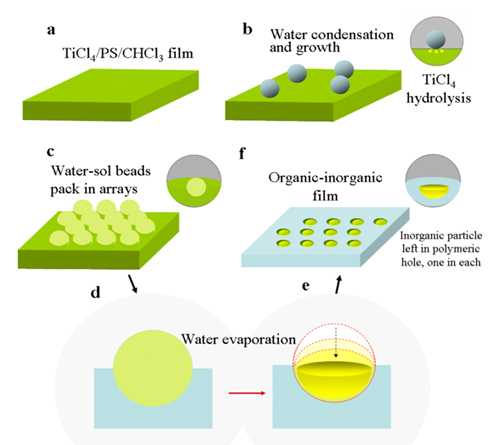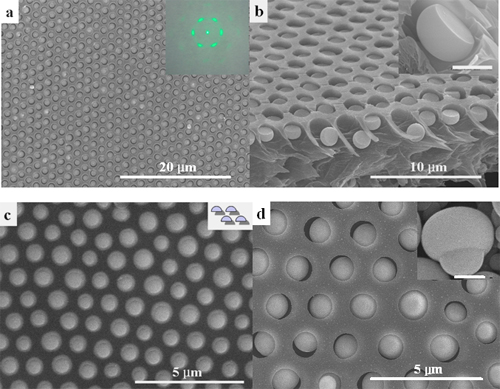Fabrication and ordered arrangement of asymmetric TiO2 particles
Photonic crystals (PCs) have potential applications in the future information field. Usually, the PCs are formed by the self-assembly of spherical colloids. Theoretical studies suggest that the obtained simple face-center-cubic (FCC) structured PCs can not realize the complete photonic band gap because of the symmetry induced band degeneracy. The introduction of asymmetric particle into the FCC structure could realize the complete photonic band gap. Recently, a great deal of attentions have been paid on thesynthesis and ordered arrangement of asymmetric particles.
Under the supports of the National Natural Science Foundation of China, the Chinese Ministry of Science and Technology, the Chinese Academy of Sciences, and Institute of Chemistry, Dr. Xu Jian’s group in the State Key Laboratory of Polymer Physics and Chemistry developed a method which combines polymer self-assemble and sol-gel transition to prepare the highly arranged hemispherical or biomimetic mushroom-like TiO2 micro-particles. The TiCl4/PS/CHCl3 solution was evaporated at ambient condition and hexagonal water droplet arrays condensed on the solution surface were used as the “micro-reactors” for the hydrolysis of TiCl4, and at the same time PS self-organized around the arrays of “micro-reactors” to form an ordered porous matrix. TiCl4 hydrolyzed in these “micro-reactors” and asymmetric TiO2 particles were formed. Finally a patterned “bead in pore” composite film with hemispherical or mushroom-like TiO2 micro-particles lying in the holes of honeycomb-like polystyrene matrix was formed, realizing the 2D ordered arrangement of asymmetric particles. Additionally, hexagonally non-close packed arrays analogue to that of insect compound eyes can be formed by peeling the hemispherical particles off the composite film with an adhesive tape. This method has the priority of easy-operation, low-cost and scalability. This work was published in J. Am. Chem. Soc. 2011, 133, 3736-3739.

Scheme of the formation of highly ordered asymmetrical inorganic particle/polymer composite films by BFs method. (Image by LI Xiaofeng)

SEM images of hexagonally non-close-packed asymmetrical TiO2 particles arrays. (Image by LI Xiaofeng)





